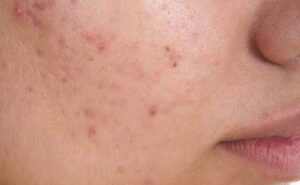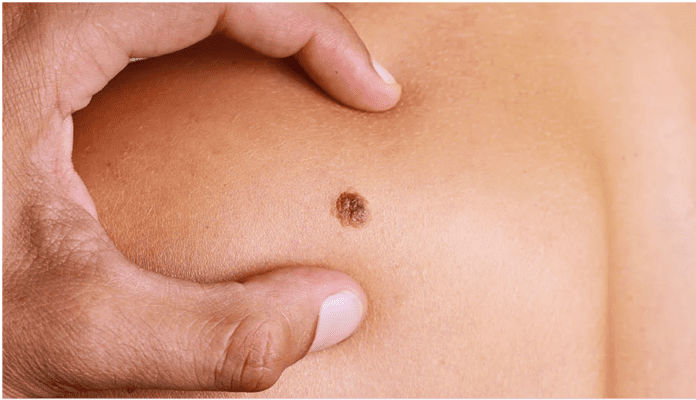As May is Skin Cancer Awareness Month, there is no better time to bring to light the importance of skin cancer prevention.
Skin cancer is the most frequent malignancy with over 5 million cases identified each year. Fortunately, is also one of the most preventable malignancies. We can and will save lives by disseminating information about the hazards of unprotected sun exposure and urging people to inspect their skin for warning signals.
This month (May) is an opportunity for us to raise awareness about the hazards of skin cancer, exchange information, and help save lives.
Skin cancer

This is usually the result of sun exposure and blistering sunburns that occur in childhood in addition to cumulative sun exposure. The most important thing we can do is to protect our children from early sun exposure, although it’s never too late to reduce your own risk for skin cancer. Eliminating ongoing sun damage is very important.
The good news is that most people with skin cancer are going to be fine. The majority of skin cancers are either basal cell or squamous cell carcinomas. Only 4% of all skin cancers are melanoma, the most serious type of skin cancer.
See also What You Should Know about throat cancer
Skin cancer happens when skin cells grow and multiply in an uncontrolled, unorderly way.
Normally, new skin cells form when cells grow old and die or when they become damaged. When this process doesn’t work as it should, a rapid growth of cells (some of which may be abnormal cells) results. This collection of cells may be noncancerous (benign), which don’t spread or cause harm, or cancerous, which may spread to nearby tissue or other areas in your body if not caught early and treated.
What causes Skin cancer
Skin cancer is often caused by ultraviolet (UV) light exposure from the sun. Overexposure to sunlight is the leading cause of skin cancer, especially when it results in sunburn and blistering. The sun’s ultraviolet (UV) rays break the DNA in your skin, causing abnormal cells to grow. These aberrant cells divide fast and disorganized, generating a mass of cancer cells.
Frequent skin contacts with certain substances, such as tar and coal, is another cause of skin cancer.
Types of skin Cancer

There are three main types of skin cancer
- Basal cell carcinoma
- Squamous cell carcinoma
- Melanoma
Basal cell carcinoma and squamous cell carcinoma are the most common types of skin cancer and are sometimes called “non-melanoma skin cancer.”
Melanoma is the most severe type of skin cancer and is less prevalent than basal cell or squamous cell carcinomas. Melanoma is more likely to spread to organs other than the skin if left untreated or diagnosed at a late stage, making treatment difficult and even life-limiting.
See also What to know about breast cancer

Symptoms of Skin Cancer
- A small, smooth, pearly or waxy bump on the face, ears, and neck.
- A flat, pink/red- or brown-colored lesion on the trunk or arms and legs.
- Areas on the skin that look like scars.
- Sores that look crusty, have depression in the middle or bleed often.
- A firm pink or red nodule.
- A rough, scaly lesion that might itch, bleed and become crusty.
- A brown-pigmented patch or bump.
- A mole that changes in color, size or that bleeds.
How is skin cancer treated?
Treatment depends upon the stage of cancer. Stages ranges from stage 0 to stage IV. The higher the number, the more cancer has spread.
Sometimes a biopsy alone can remove all the cancer tissue if the cancer is small and limited to your skin’s surface only.
Fortunately, most skin cancers are curable if detected and treated early. This is why it is critical to take precautions and consult with your healthcare physician if you suspect you have skin cancer.
See also Breast Self-Exam: How to Do It and What to Look For
Cryotherapy
Cryotherapy uses liquid nitrogen to freeze skin cancer. The dead cells slough off after treatment. Precancerous skin lesions, called actinic keratosis, and other small, early cancers limited to the skin’s top layer can be treated with this method.
Excisional surgery
This surgery involves removing the tumor and some surrounding healthy skin to be sure all cancer has been removed.
Mohs surgery
With this procedure, the visible, raised area of the tumor is removed first. Then your surgeon uses a scalpel to remove a thin layer of skin cancer cells. The layer is examined under a microscope immediately after removal. Additional layers of tissue continue to be removed, one layer at a time, until no more cancer cells are seen under the microscope.
Mohs surgery removes only diseased tissue, saving as much surrounding normal tissue as possible. It’s most often used to treat basal cell and squamous cell cancers and near sensitive or cosmetically important areas, such as eyelids, ears, lips, forehead, scalp, fingers or genital area.
Curettage and electrodesiccation
The technique uses an instrument with a sharp looped edge to remove cancer cells as it scrapes across the tumor. The area is then treated with an electric needle to destroy any remaining cancer cells. This technique is often used for basal cell and squamous cell cancers and precancerous skin tumors.
Chemotherapy and immunotherapy
Chemotherapy uses medications to kill cancer cells. Anticancer medications can be applied directly on the skin (topical chemotherapy) if limited to your skin’s top layer or provided through pills or an IV if cancer has spread to other parts of your body. Immunotherapy uses your own body’s immune system to kill cancer cells.
Radiation therapy
Radiation therapy is a form of cancer treatment that uses radiation (strong beams of energy) to kill cancer cells or keep them from growing and dividing.
Photodynamic therapy
In this therapy, your skin is coated with medication and a blue or red fluorescent light then activates the medication. Photodynamic therapy destroys precancerous cells while leaving normal cells alone.
See also What to do when Someone is Having an Asthma attack
Can skin cancer be prevented?
Skin cancer prevention strategies include:
- Make use of a broad-spectrum sunscreen with an SPF of 30 or higher. Broad-spectrum sunscreens shield the skin from both UV-B and UV-A radiation. 30 minutes before going outside, apply sunscreen. Wear sunscreen every day, even if it’s cloudy.
- Protect your face and ears by wearing hats with wide brims.
- Wear long-sleeved shirts and pants to protect your arms and legs.
- Wear sunglasses to protect your eyes.
- Use lip balm that contains sunscreen.
- Between 10 a.m. and 4 p.m., stay out of the sun.
- Avoid tanning beds. If you want a tanned look, use a spray-on tanning product.
- Inquire with your doctor or pharmacist whether any of your drugs make your skin more susceptible to sunlight. Tetracycline and fluoroquinolone antibiotics, tricyclic antibiotics, the antifungal agent griseofulvin, and statin cholesterol-lowering drugs are all known to make your skin more sensitive to the sun.
- Check all the skin on your body and head for any changes in size, shape or color of skin growths or the development of new skin spots. Don’t forget to check your scalp, ears, the palms of your hands, soles of your feet, between your toes, your genital area and between your buttocks. Use mirrors and even take pictures to help identify changes in your skin over time. Make an appointment with your dermatologist if you notice any changes in a mole or other skin spot.

